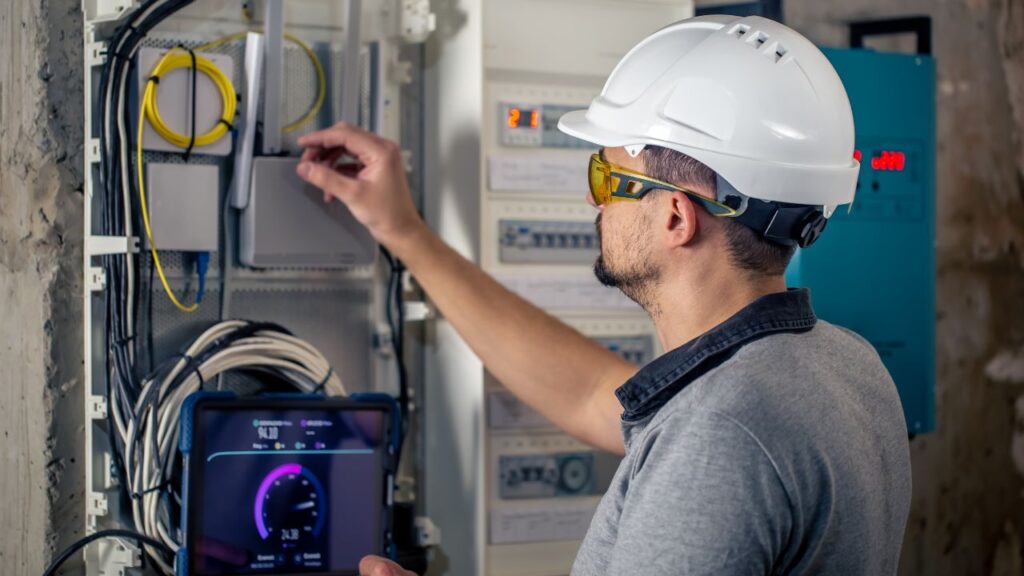In the field of construction, accurate estimates are the strong setting stones for any foundation. Among all the CSI trades, electrical estimating tends to be more complex. It is not just about counting the wires, outlets, and fixtures but rather estimating the exact number of materials and labor required and determining the time, in which the project will be completed.
Whether you are a construction contractor, sub-contractor, or a project manager, having a profound knowledge of all the electrical estimating steps is essential. Even if you are a solo contractor with a huge estimating firm or an in-house estimator, this knowledge helps you in avoiding the costly surprises and complete the project on a profitable end.
“Accurate electrical estimating isn’t just about numbers—it’s about foresight,” says Alex Ryan from Unity Estimating. “A single overlooked detail in material or labor can throw an entire project off track. That’s why at Unity Estimating, we emphasize precision, especially for residential electrical estimating services, ensuring every bid reflects both accuracy and profitability.”
Let’s break down the electrical estimating process, step by step:
Step 1: Reviewing the Project Scope and Documents
Before estimating any numbers, this step is very essential. Electrical estimators go through the following documents:
- Blueprints and electrical drawings
- Specifications and scope of work
- Addenda and RFI responses
- Project timelines and construction schedules
This step sets the foundation of the entire electrical estimate. It sets the clarity whether it is a new-build, remodel or an addition to the existing structure? What is expected by the client? Which systems are being installed? The better understanding at this step, the better it will be in the long run.
Step 2: Performing a Detailed Takeoff
Next comes the quantity takeoff, which is the heart of the estimating process. This is where the estimator determines the exact number of materials needed for the job. Using the drawings and specs, they’ll identify and count every item related to the electrical system, including:
- Conduits and cables
- Switches, panels, and outlets
- Light fixtures
- Fire alarm systems and low-voltage wiring
- Grounding and bonding components
Now as the world has evolved, so has the field of estimating too. Nowadays, expert use modern electrical estimating software like PlanSwift, Bluebeam, ProEst, etc, to streamline the entire estimating process and reduce the chances of human errors.
Step 3: Applying Labor Units
Once all the materials required for the project are determined, next is the turn for estimating teh labor costs. These are one of the most costly parts of estimating the electrical processing. Most of the estimators do this by aligning with the NECA (National Electrical Contractors Association), depending upon the factors:
- Job complexity
- Site conditions
- Crew experience
- Project schedule
- Working hours (regular vs. overtime)
Step 4: Factoring in Material and Equipment Costs
Now it’s time to assign costs to all materials and any rented or purchased equipment. Estimators will reach out to suppliers for up-to-date pricing or use a database with current market rates.
They’ll also account for:
- Delivery fees
- Storage or handling costs
- Waste and overages
- Special equipment (like lifts, trenchers, or testing devices)
Step 5: Adding Overhead and Profit
Electrical estimating is not just about covering the direct costs but you also need to stay on a profitable edge. This is where overheads and profit play their role.
Overheads are those costs which are not specifically linked to the construction project in itself like office rent, maintenance charges, software costs, etc.
Profit is what,which keeps the company growing. Most of the companies and contractors add 10%-15% of contingency markup in their budget, avoiding the cost overruns and time delays.
Step 6: Reviewing and Finalizing the Estimate
Once all the numbers are in, it’s time for a final review. This is where the estimator (and possibly a project manager or company owner) checks:
- Are all materials and labor accounted for?
- Are the numbers realistic and based on current market rates?
- Are there any potential risks or missing items?
- Do the estimate and scope align with client expectations?
Step 7: Presenting the Bid
The final step is to package and submit the bid to the client. This might include:
- A detailed proposal
- A summary of the estimate
- Terms and conditions
- A breakdown of labor, materials, and project duration
Some contractors may also include value engineering options or alternate pricing for different product choices. The goal is to present the client with a professional, clear, and competitive offer.
Why It Matters
A well-executed electrical estimate isn’t just a best guess—it’s a business tool. It helps you:
- Win more bids
- Avoid cost overruns
- Manage projects efficiently
- Build trust with clients and general contractors
In a competitive industry, accuracy and confidence in your numbers can be the difference between winning a job or losing it, and between making a profit or absorbing a loss.
Final Thoughts
The electrical estimating process looks like a huge deal to make. But having a profound knowledge of all it’s components, it becomes really easy. By having a breakdown of all the components of electrical estimating, it becomes easy to communicate with stakeholders, spot potential errors, and make more informed decisions.
Whether you are professional contractor or new to the world of estimating, having expert hands on estimating is one of teh most significant skills in the field of construction. When you are in doubt, you can always consult a professional electrical estimating company for your estimates, so you can stay on a competitive edge.






